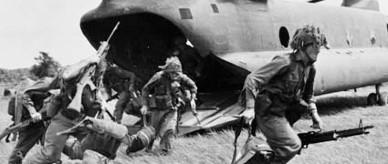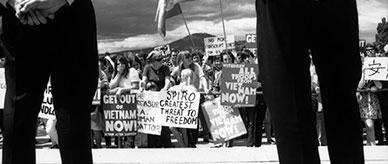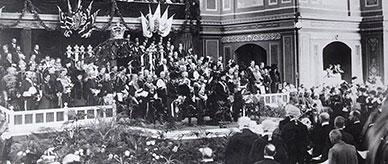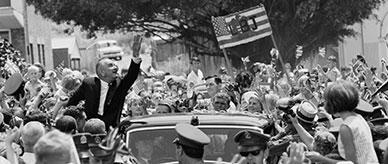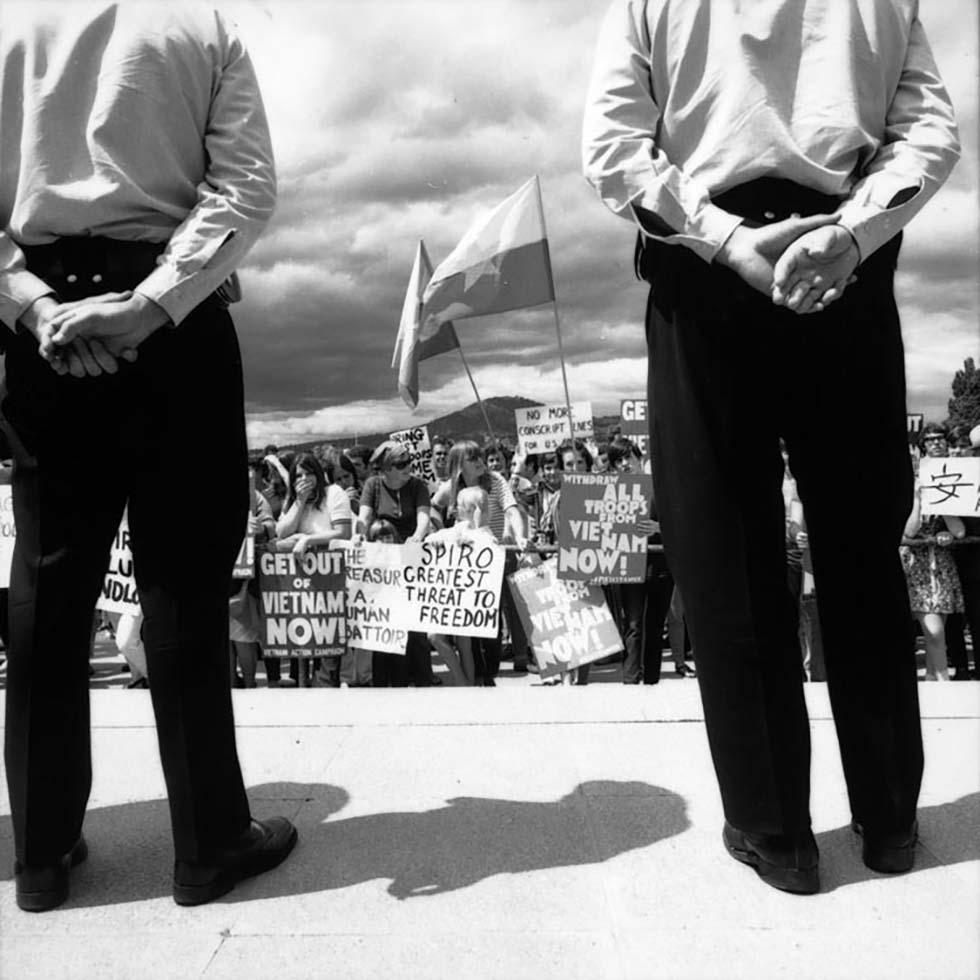


About this record
This photograph shows a demonstration against the Vietnam War outside (old) Parliament House in Canberra. It was taken during the visit to Australia of United States Vice President Spiro Agnew.
Opposition to the Vietnam War
Australia's involvement in the Vietnam War began in 1962 when 30 military advisers were deployed to support South Vietnamese forces. By 1965, it was apparent that the allied forces could not hold out and the United States increased its commitment. Australia responded to a South Vietnamese request by increasing its forces in May 1966. At the height of Australian involvement, there were 8500 Australian army personnel involved. Overall, 521 Australians were to die in the war. Around 3000 Australians were wounded.
Opposition to Australia's involvement in the Vietnam War grew after 1964, when conscription was introduced. Televised images of the fighting also strongly influencing the escalation in anti-war feeling.
An increasing number of demonstrations against the war took place in in 1969 and 1970. During March and April 1969, street marches and sit-ins were held across the country. They reached a peak in May 1970 when more than 200,000 people across Australia marched in the first moratorium (coordinated mass protest).
Opposition to conscription was a large part of anti-Vietnam War protests in Australia. Many protesters also asserted that the war was one of national liberation fought by both North and South Vietnamese communists against foreign imperialists: first the French, then the Japanese, then the French again and finally the United States. The Australian and United States governments saw the war as necessary to halt the spread of communism.
The demonstration during United States Vice President Spiro Agnew's visit to Australia in 1970 was relatively small, with several hundred people, at most, attending. But the fact that a wide range of people took part indicates the extent to which the Vietnam War had politicised the Australian population. Most of the demonstrators seen in this photograph of the protest are women in their 20s and 30s and children. Other photographs taken on the day show men of similar ages and many older people, suggesting that people of all ages felt strongly about Australia's involvement in the war. There was a considerable police presence and several arrests were made.
Acknowledgments
Learning resource text © Education Services Australia Limited and the National Archives of Australia 2010.
Related themes
Need help with your research?
Learn how to interpret primary sources, use our collection and more.

